SpringBoot如何通过webjars管理静态资源文件夹
WebMvcAutoConfiguration
添加资源映射:
public void addResourceHandlers(ResourceHandlerRegistry registry) { if (!this.resourceProperties.isAddMappings()) {logger.debug('Default resource handling disabled'); } else {Duration cachePeriod = this.resourceProperties.getCache().getPeriod();CacheControl cacheControl = this.resourceProperties.getCache().getCachecontrol().toHttpCacheControl();if (!registry.hasMappingForPattern('/webjars/**')) { this.customizeResourceHandlerRegistration(registry.addResourceHandler(new String[]{'/webjars/**'}).addResourceLocations(new String[]{'classpath:/META-INF/resources/webjars/'}).setCachePeriod(this.getSeconds(cachePeriod)).setCacheControl(cacheControl));}String staticPathPattern = this.mvcProperties.getStaticPathPattern();if (!registry.hasMappingForPattern(staticPathPattern)) { this.customizeResourceHandlerRegistration(registry.addResourceHandler(new String[]{staticPathPattern}).addResourceLocations(WebMvcAutoConfiguration.getResourceLocations(this.resourceProperties.getStaticLocations())).setCachePeriod(this.getSeconds(cachePeriod)).setCacheControl(cacheControl));} } }
所有'/webjars/**'路径 , 都去类路径下 classpath: /META-INF/resources/webjars/ 找资源, 所以就是
http://localhost:8080/webjars/jquery/3.5.1/jquery.js
能访问
/META-INF/resources/webjars/jquery/3.5.1/jquery.js 路径的文件
1) webjars: 以jar包的方式引入静态资源
什么是webjar?
搜索webjar, 可以将jquery用pom引入:
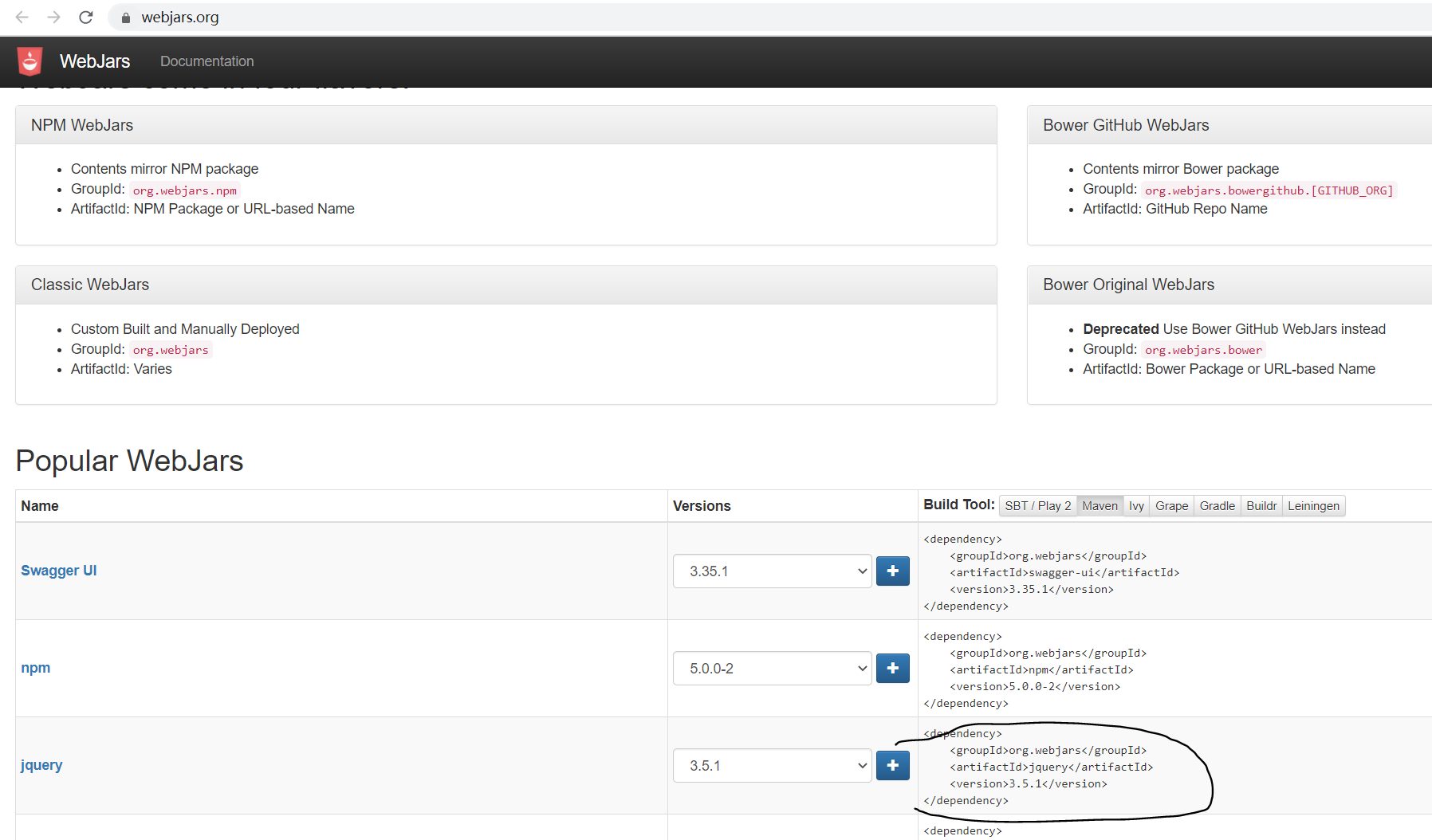
引入, 正好对应这个映射:
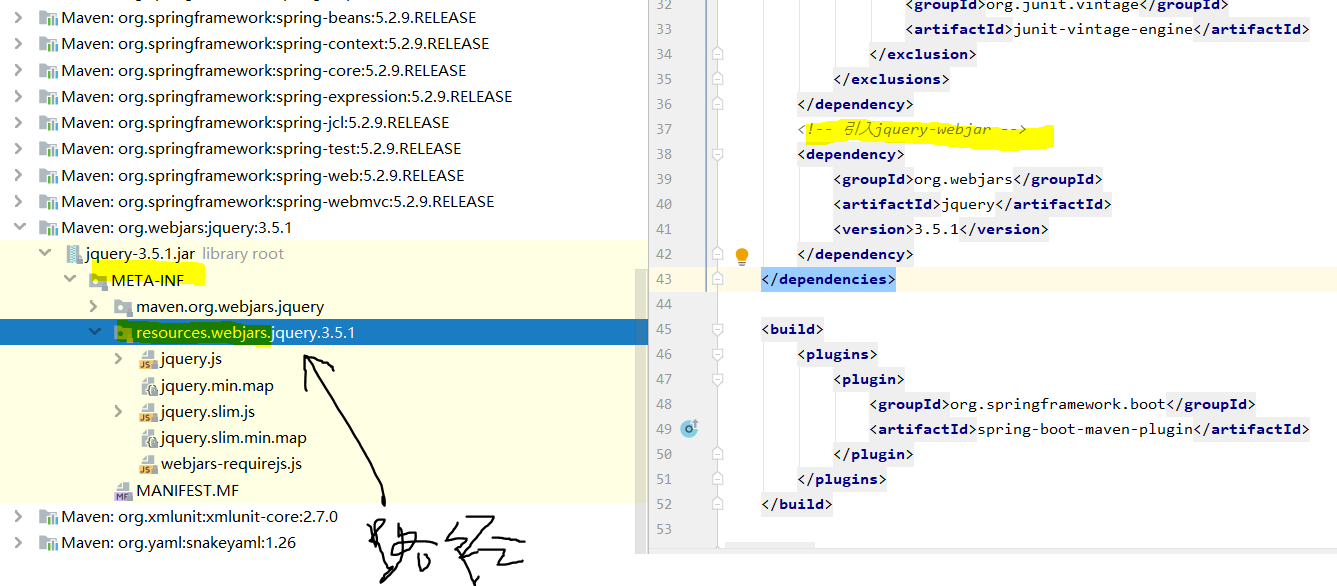
结果是的:
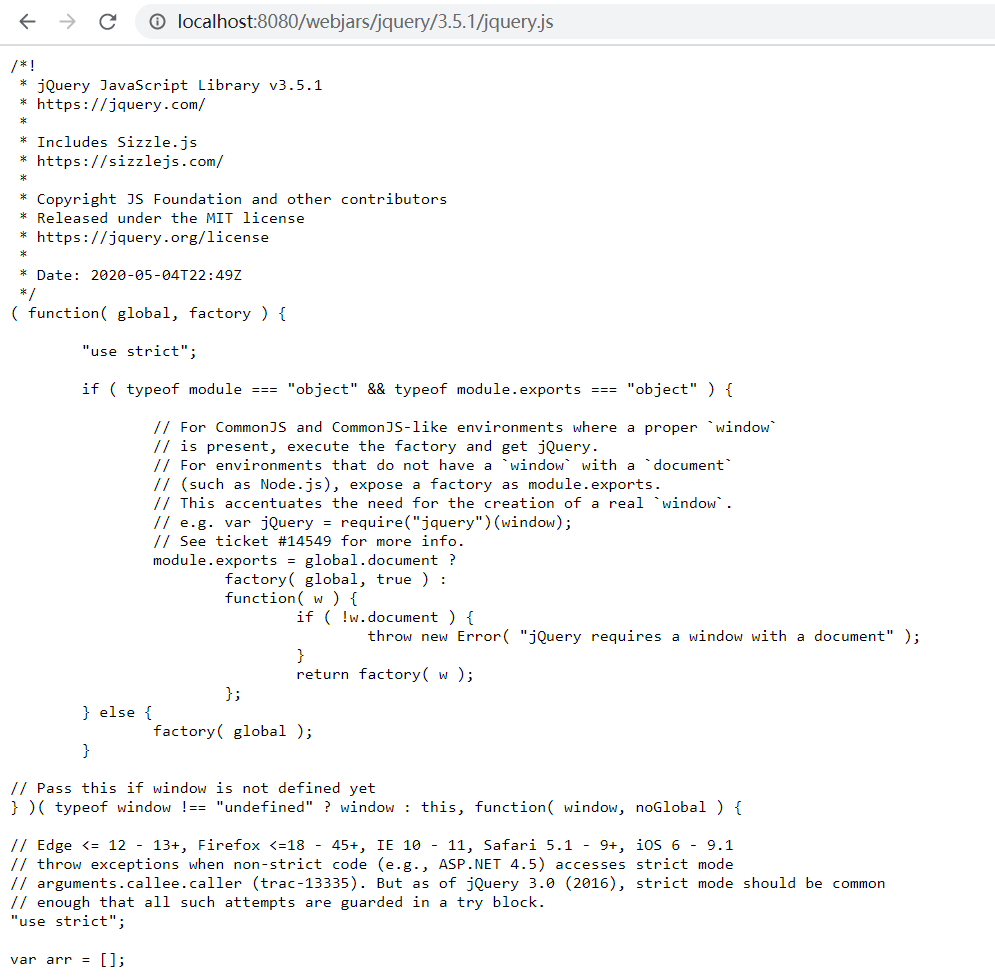
2) springboot对静态资源的映射规则:
看代码:
还是
WebMvcAutoConfiguration的这个方法
public void addResourceHandlers(ResourceHandlerRegistry registry) { if (!this.resourceProperties.isAddMappings()) { logger.debug('Default resource handling disabled'); } else { Duration cachePeriod = this.resourceProperties.getCache().getPeriod(); CacheControl cacheControl = this.resourceProperties.getCache().getCachecontrol().toHttpCacheControl(); if (!registry.hasMappingForPattern('/webjars/**')) { this.customizeResourceHandlerRegistration(registry.addResourceHandler(new String[]{'/webjars/**'}).addResourceLocations(new String[]{'classpath:/META-INF/resources/webjars/'}).setCachePeriod(this.getSeconds(cachePeriod)).setCacheControl(cacheControl)); } String staticPathPattern = this.mvcProperties.getStaticPathPattern(); if (!registry.hasMappingForPattern(staticPathPattern)) { this.customizeResourceHandlerRegistration(registry.addResourceHandler(new String[]{staticPathPattern}).addResourceLocations(WebMvcAutoConfiguration.getResourceLocations(this.resourceProperties.getStaticLocations())).setCachePeriod(this.getSeconds(cachePeriod)).setCacheControl(cacheControl)); } }}
进去:
WebMvcProperties
private String staticPathPattern; private final WebMvcProperties.Async async; private final WebMvcProperties.Servlet servlet; private final WebMvcProperties.View view; private final WebMvcProperties.Contentnegotiation contentnegotiation; private final WebMvcProperties.Pathmatch pathmatch; public WebMvcProperties() { this.localeResolver = WebMvcProperties.LocaleResolver.ACCEPT_HEADER; this.format = new WebMvcProperties.Format(); this.dispatchTraceRequest = false; this.dispatchOptionsRequest = true; this.ignoreDefaultModelOnRedirect = true; this.publishRequestHandledEvents = true; this.throwExceptionIfNoHandlerFound = false; this.logResolvedException = false; this.staticPathPattern = '/**'; this.async = new WebMvcProperties.Async(); this.servlet = new WebMvcProperties.Servlet(); this.view = new WebMvcProperties.View(); this.contentnegotiation = new WebMvcProperties.Contentnegotiation(); this.pathmatch = new WebMvcProperties.Pathmatch(); }
addResourceLocations(WebMvcAutoConfiguration.getResourceLocations(this.resourceProperties.getStaticLocations())) 这里添加了资源的位置
public class ResourceProperties { private static final String[] CLASSPATH_RESOURCE_LOCATIONS = new String[]{'classpath:/META-INF/resources/', 'classpath:/resources/', 'classpath:/static/', 'classpath:/public/'}; private String[] staticLocations; private boolean addMappings; private final ResourceProperties.Chain chain; private final ResourceProperties.Cache cache; public ResourceProperties() { this.staticLocations = CLASSPATH_RESOURCE_LOCATIONS; this.addMappings = true; this.chain = new ResourceProperties.Chain(); this.cache = new ResourceProperties.Cache(); }
'/**'访问当前项目的任何资源, (静态资源的文件夹) ,如果没人处理,会默认去以下几个文件路径下找[/code]复制代码 代码如下:// 静态资源文件夹, 这几个都可以存放静态资源:
classpath:/META-INF/resources/classpath:/resources/'classpath:/static/'classpath:/public/
例如 localhost:8080/a/b.js , 可以到 /META-INF/resources/a/b.js 找

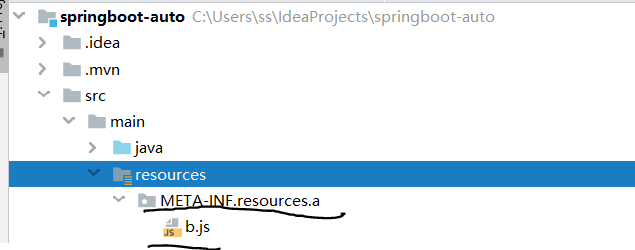
或者:
/resources/a/b.js找:

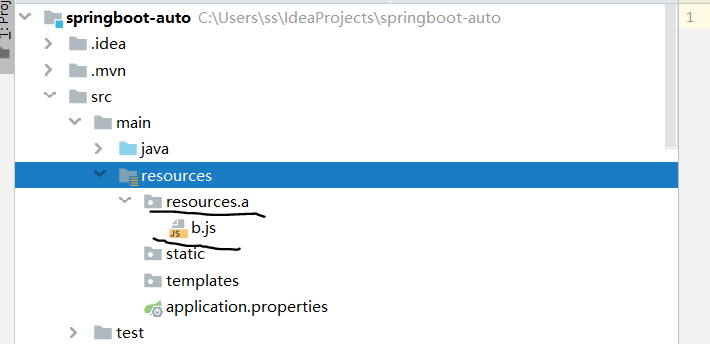
或者类路径下/static/a/b.js找:

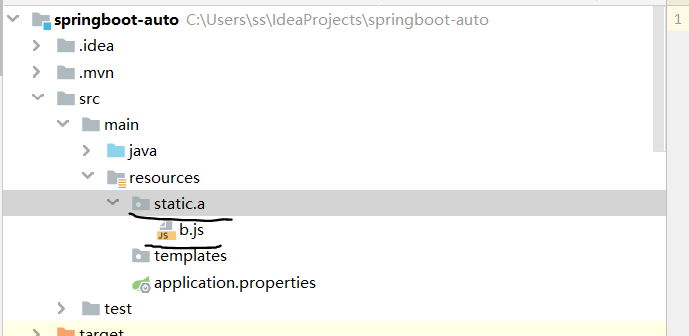
或者/public/a/b.js下找

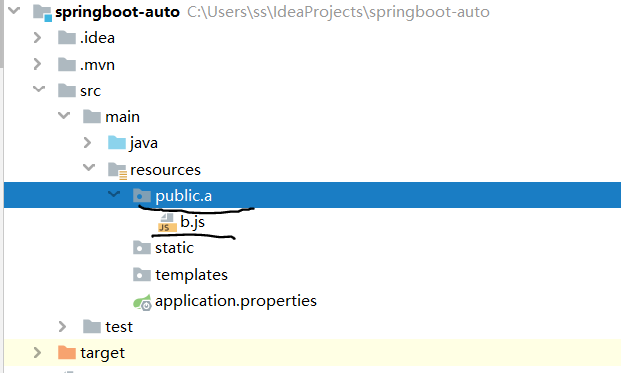
3)欢迎页面: 静态资源文件夹下的所有index.html页面: 被 /**映射
http://localhost:8080/ 会到以上静态资源文件夹中找index.html页面
源码有变化,我没明白回头再看
结果:

路径:
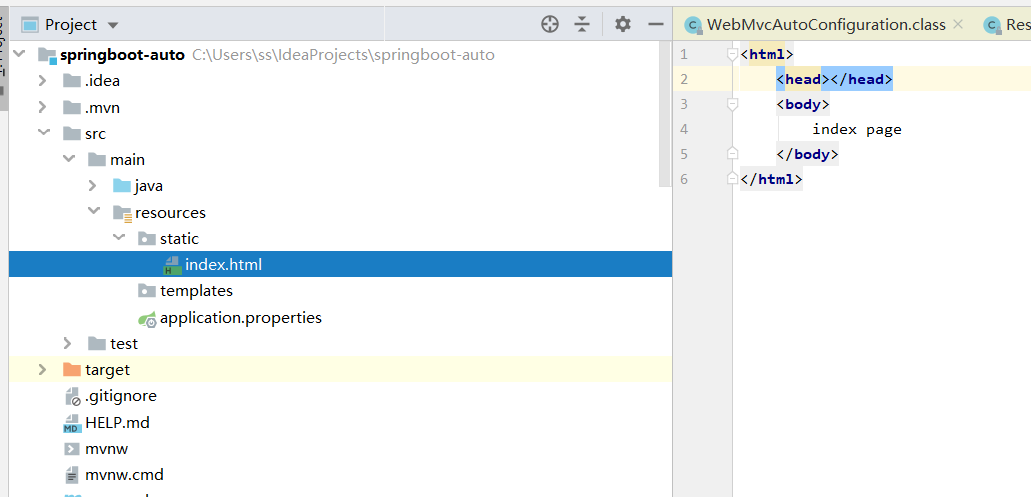
以上就是本文的全部内容,希望对大家的学习有所帮助,也希望大家多多支持好吧啦网。
相关文章:
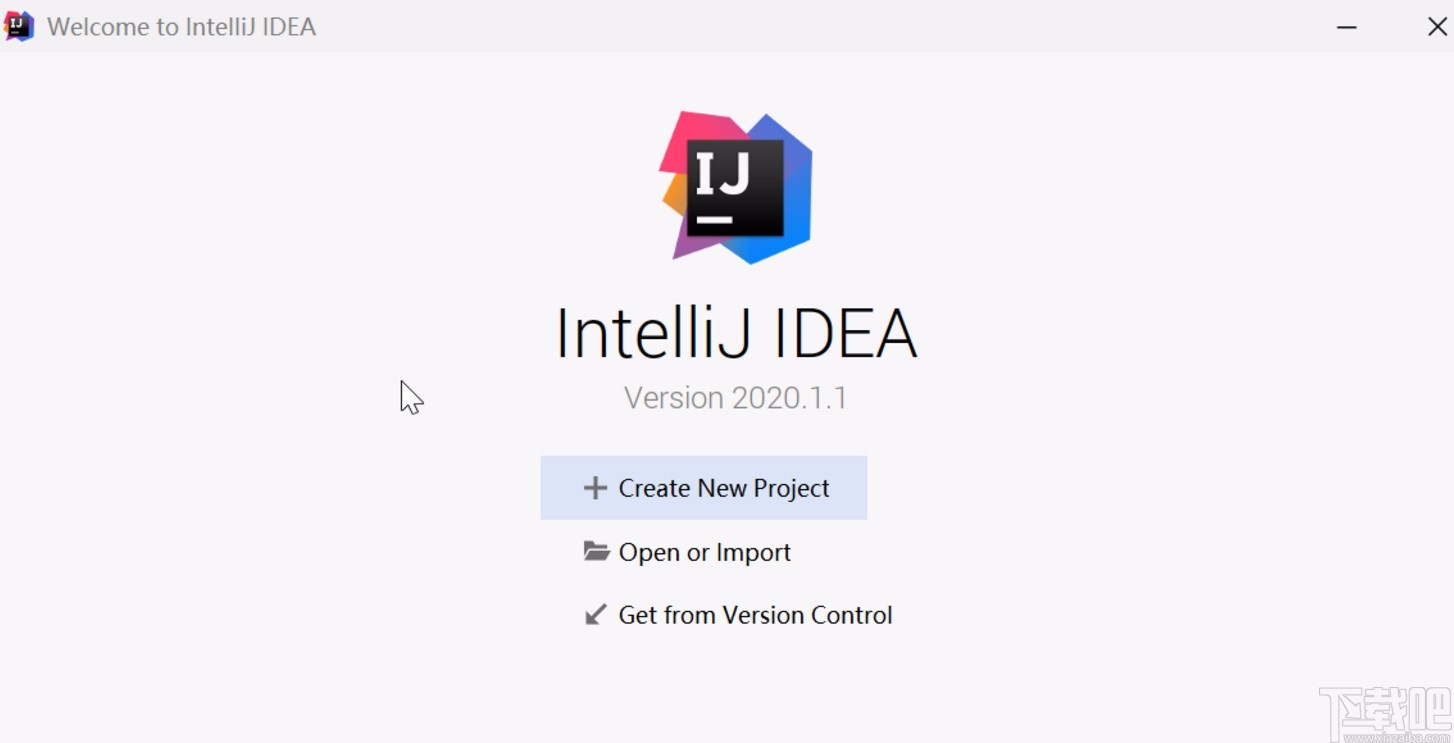
 网公网安备
网公网安备